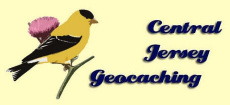About this Cache
This cache is one in a series of puzzle solving training caches. Within each cache description you'll learn some tips and tricks to solving a specific type of puzzle cache. Hopefully, these lessons will help you hone your puzzle solving skills.
Developing a Game Plan
You've read through the cache description and now you need to identify the puzzle.
There are several types of popular puzzles that work well as geocache puzzle.
* Word Play - (Word Search, Fill-in, Crossword, Anagrams)
* Trivia - (Look up stats, images, information to get numbers)
* Math - (Calculating distances, searching constants such as pi or e, prime numbers, alternate bases)
* Logic - (Critical thinking, given a list of premises and deduced conditions from them)
* Codes and Ciphers - (Symbols, shifts, substitutions, keyed passwords, letter replacement based on an algorithm)
* Steganography - (hidden messages, concealed messages withiin: images, articles, or "invisible" ink)
* Lateral Thinking - (Thinking out of the box, indirect and creative approach)
* A Combination of two of more
Cache Page Content
Any part of the cache page can be used to conceal information or provide hints to the puzzle solver. If youre stuck on a puzzle, be sure to check out all of the possible hiding places on the page for clues.
The parts of the cache description page that can be modified by the owner include:
* Cache name - (The title can be significant)
* Cache owners name
* Hidden on date
* Size, difficulty and terrain
* Coordinates
* Related web page
* Images and Background image URL
* Short description - (Word choice is there some deliberate?)
* Long description - (Look for things out of the ordinary)
* Hints
* Log entries
* Travel Bug History (and travel bugs that passed through the cache)
Narrowing Your Search
Puzzle Cache Proximity (aka The 2-Mile Limit): The cache placement guidelines require the final location of a puzzle cache to be less than 2 miles from its posted coordinates (unless the cache page states otherwise). This limit naturally limits the possible solutions to your puzzle. In the vicinity of this cache (N 40º W 74º), one minute of longitude or latitude is approximately equal to one mile.
Suppose a puzzle cache has posted coordinates of N 40 22.000 W 74 15.000. Without knowing anything else about the solution, the two-mile limit means that the final has to be somewhere between N 40 20.000 and N 40 24.000, and between W 74 13.000 and W 74 17.000. A quick look at the coordinate on a map will not tell you where the cache is, but it will help you eliminate some area and maybe give you a good idea of coordinates that are closer to the actual cache.
For this cache, notice that the first three digits of the latitude (N) are 4 0 2, and the longitude (W) are 7 4 1. If your solution leads you to a pair of number sequences and the first sequence starts with 402 and the second sequence starts with 741, then youve probably found the key to solving the puzzle.
Look Up Terms You Dont Know
If youre not familiar with a word in a cache description, look it up. Google and Wikipedia are two of the most powerful tools that a puzzle solver has at his or her disposal.
Images and Links
Many puzzles use images on the description pages. These images may contain the puzzle elements. Pay attention to links in the text as well as for clickable links on the page. Dont be afraid to click on anything and everything you see.
Numbers are Everywhere!
I believe it is human nature to try to put things in order and to arrange them. Look for things that can resolve into value. Keep an eye out for pairs of three, five or seven things, or groups where degrees, minutes and decimal minutes may arise. A pair of five things might be the coordinates of the minutes, using along with the degrees of the posted coordinates. A pair of three things might be the fraction of minutes in each coordinate.
Training Lesson #2

This cache is certified Central Jersey!









